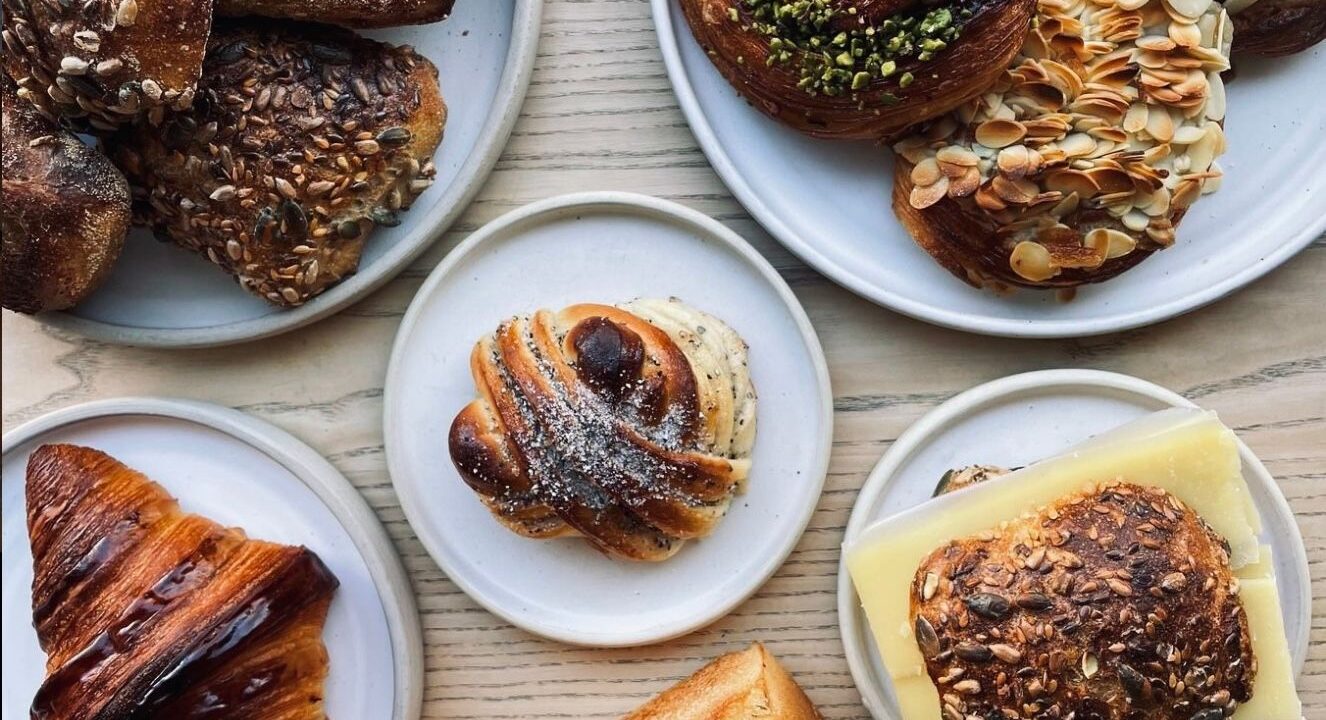By 4 p.m., the sun has already set, painting Copenhagen’s sky a deep blue. I tug my wool hat lower and tighten my scarf against the biting wind as I walk along the Østerbro waterfront. It’s the winter solstice—the shortest, darkest day of the year—yet the Danes somehow turn this frigid season into something magical.
Christmas markets glow throughout the city, blending festive cheer with the Scandinavian concept of hygge—that warm feeling of coziness and contentment. The air smells of steaming mugs of gløgg (mulled wine) as locals bike past shimmering canals. Following a tempting aroma, I find myself outside a bakery called Juno, one of Copenhagen’s most celebrated pastry spots.
Inside, the warmth and buttery scent wrap around me as I watch bakers carefully shape dough into edible art. Unable to resist, I order their famous cardamom bun. The first bite is heavenly—crispy caramel, fragrant cardamom, and soft, pillowy dough. It’s pure hygge, a simple yet indulgent treat that locals enjoy regularly. And so begins my quest to understand why Copenhagen is home to some of the world’s best pastries.
To find answers, I start at the beginning—Sankt Peders, the city’s oldest bakery, established in 1652. Nestled in the Latin Quarter among pastel-colored shops and cobblestone streets, it stands as a testament to centuries of Danish baking traditions. But those traditions have evolved dramatically over time.
Back in 1652, the Copenhagen Bakers’ Guild was formed to regulate the trade, ensuring quality and protecting bakers’ rights. Approved bakeries displayed a golden kringle (a pretzel-like symbol) above their doors—a mark of royal approval still seen today. Then, in the 1800s, a bakers’ strike led to a labor shortage, bringing Austrian bakers to the city. They introduced techniques like lamination—the secret behind perfect croissants—which Danish bakers later blended with local flavors, giving rise to iconic pastries like wienerbrød (literally “Vienna bread”).
While tradition still holds weight, innovation thrives in Copenhagen’s bakeries. Take Hart Bageri, for example—a stylish yet approachable spot opened in 2018 by Richard Hart, a former baker at San Francisco’s famed Tartine. With support from Noma (often ranked the world’s best restaurant), Hart combines classic techniques with bold creativity. Alongside him…At the helm was—and still is—Talia Richard-Carvajal, Hart’s creative director and COO.
As I spoke with Talia, one thing became clear: inspiration is everywhere for her. It’s in the Noma greenhouses used for research before the bakery opened. It’s in Hay, the Danish furniture brand that shaped Hart’s shop design and branding. And it lives on in their cardamom croissants and strawberry tarts, two beloved pastries with Hart’s signature twist.
“We feel like a modern Copenhagen brand,” Talia explains, “but Denmark has such a strong baking tradition.” Respecting and celebrating that tradition is non-negotiable. It shows in Hart’s classic pastries, seasonal creations, and even in the way Talia talks about baking. “By experimenting with techniques, we aim to elevate flavors without losing what’s already perfect,” she says.
This culinary evolution extends beyond Hart. Claus Meyer, co-founder of Noma and pioneer of New Nordic Cuisine, opened Meyers Bageri in 2010 to showcase the best local Nordic ingredients. “We partner with an organic farm just across the bridge,” says Jonas Astrup, Meyers’ head of development. “We use only organic flour and produce, which makes us more aware of how we source and what our region can offer.”
But innovation thrives with community. “We gave away recipes for free to spark enthusiasm,” Jonas explains. “It’s just as rewarding if people bake great bread at home. Here’s some sourdough starter—buy flour from us if you like.”
The message is clear: ingredients matter, quality matters, community matters, tradition matters. Combined with craftsmanship and a deep tie to local history, it’s no wonder Copenhagen has become a global food capital. From the city’s first bakery to centuries of refining the craft, one thing’s certain—these pastries are irresistible. I couldn’t get enough.
I returned to Copenhagen the next June, and again last October. Now knowing the metro by heart, I set off with a scribbled note in my pocket: First, Juno. Then, Hart. Next, Meyers. Finally, Andersen. And that was just day one.
In a city known for sleek design, Copenhagen’s pastry scene keeps evolving—not just by famous chefs, but by locals reimagining what’s possible while honoring Denmark’s rich baking heritage. Today, the spirit of the guild lives on in every bakery.
